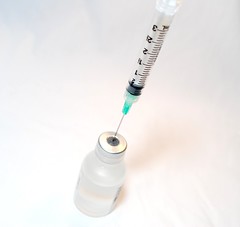
Yellow fever is a virus transmitted by mosquitoes. It is found in 29 countries of sub-Saharan Africa and 13 in South America, resulting in 200,000 cases and 30,000 deaths in endemic areas. Transmission often occurs when humans encroach jungle borders for work or leisure activities. But recently, urban outbreaks have led to the international transmission of yellow fever outside its usual boundaries.
Although in 80–90% of cases, yellow fever is only a mild infection with symptoms of fever, headache, chills, muscle pain, fatigue, loss of appetite, nausea, and vomiting lasting for less than a week, for the remaining ~15% of cases, the fever can lead to severe clinical symptoms, including jaundice, hemorrhage, shock, and organ failure.
Diagnosis of yellow fever is often with circumstantial evidence: symptoms, time and location of travel, activities, and epidemiological history of where infection occurred. Confirmation of the diagnosis requires laboratory work. Since treatments are generally directed at relieving of symptoms or initiating life-saving interventions in those with severe disease, often the diagnosis goes unconfirmed.
Are travelers at risk?
The risk of acquiring yellow fever is estimated to be low (between <1 per 1,000,000 and <1,100,000). But for those who do catch it and develop the severe form of the disease, the case-fatality rate is high—near 90% die. Travelers visiting areas where yellow fever is transmitted can minimize their risk by avoiding mosquitoes, but the most effective prevention method is vaccination. Vaccination has been available for years through a single long-lasting injection. The vaccine is recommended for all eligible persons older than 9 months traveling to endemic areas.
New urban outbreaks
 Despite the availability of the vaccine, outbreaks have recently increased. In 2016, Angola suffered one of the largest urban outbreaks of yellow fever, and more than 15 long-term travelers from Africa and Asia caught the virus. Between July 1, 2017 and April 24, 2018, a total of 1,218 confirmed human cases of yellow fever were observed in Brazil (including in major centers like Rio de Janeiro and Sao Paulo), and 364 of those infected died. Despite a vaccination campaign, only just over half in the affected areas are vaccinated, meaning there is significant potential for ongoing transmission. 1.8 billion people are at risk in urban endemic areas.
Despite the availability of the vaccine, outbreaks have recently increased. In 2016, Angola suffered one of the largest urban outbreaks of yellow fever, and more than 15 long-term travelers from Africa and Asia caught the virus. Between July 1, 2017 and April 24, 2018, a total of 1,218 confirmed human cases of yellow fever were observed in Brazil (including in major centers like Rio de Janeiro and Sao Paulo), and 364 of those infected died. Despite a vaccination campaign, only just over half in the affected areas are vaccinated, meaning there is significant potential for ongoing transmission. 1.8 billion people are at risk in urban endemic areas.
Yellow fever across borders
Outside of endemic areas, healthcare providers may not be aware of the risks of yellow fever, but in our international world, unvaccinated travelers can return home infected. Recently the rate of these infections has increased dramatically. From 1970 through to 2015, a stretch of 45 years, only 10 cases of yellow fever were reported in unvaccinated travelers returning from both West Africa and South America, but between January and March 2018, a stretch of only three months, the same number of cases of yellow fever, including four deaths, were reported in unvaccinated international travelers returning from Brazil alone. As of April 24, 2018, a total of 19 confirmed cases of yellow fever were reported among travelers in Brazil, Argentina, France, Germany, the Netherlands, Romania, Switzerland, and the United Kingdom. All told, since 1970, just over 40 cases of yellow fever were reported in unvaccinated travelers to West Africa and South America.
A disruption in vaccine supply
One reason for the increase in cases and outbreaks of yellow fever may have been due to a disruption in the vaccine supply. The company, Sanofi Pasteur, responsible for producing a majority of yellow fever vaccines made changes to its manufacturing facility, so there has been a four year disruption to the supply of the effective live-attenuated yellow fever vaccine. During this time, the USA negotiated to import and distribute a similar vaccine, Stamaril, manufactured by Sanofi Pasteur France since 1986 and distributed in 70 countries with comparable safety and efficacy.
 However, distribution of Stamaril has not happened in some locations – such as Canada – which meant that instead of the usual full intramuscular dose of vaccine (as determined by International Health Regulations (IHR) for an international certificate of vaccination), patients have been receiving a fifth of the usual dose, guaranteed effective for only one year. The potential human cost of this practice is as yet unknown.
However, distribution of Stamaril has not happened in some locations – such as Canada – which meant that instead of the usual full intramuscular dose of vaccine (as determined by International Health Regulations (IHR) for an international certificate of vaccination), patients have been receiving a fifth of the usual dose, guaranteed effective for only one year. The potential human cost of this practice is as yet unknown.
A newly at risk world
Rapid global changes in human mobility and urbanization make it vital for countries to re-examine vaccination policies and practices to prevent urban yellow fever epidemics. Each year, millions of travelers visit areas where yellow fever is endemic without having to provide proof of vaccination. Clinicians assessing returned travelers should also be aware of yellow fever signs and symptoms, maintaining vigilance regarding the possibility of yellow fever exposure in travelers returning from areas with ongoing transmission and outbreaks.
Comments